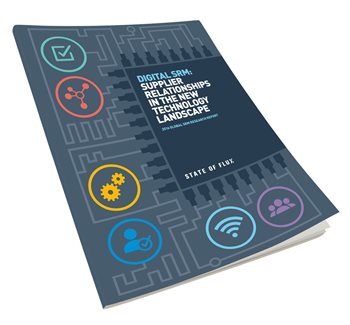The recent report on Digital SRM Supplier Relationship Management from State of Flux reveals a massive $550 billion unrealized opportunity for companies. Here are 4 ways supplier CSR ratings help you build a business case to implement SRM and capture a share of this value.
Supplier Relationship Management SRM represents a giant $550 billion opportunity for procurement to create value according to this recent Digital SRM Research Report from our partner State of Flux. Some of the gaps the report reveals include: One in five businesses do not have any software tools, and 87% are still using Excel or a mix of disconnected tools. 54% of businesses do not collect feedback from their suppliers, and only 48% of firms have effective risk management in place for more than half of their key suppliers.
Looking at this through the lens of CSR risks and opportunities, there are immense advantages that could be realized in capturing actionable data and making it available to buying teams, and driving interactions with suppliers that create new value. CSR ratings are a vital element of the information and insights that procurement teams need to build trust and deepen relationships with suppliers. Here are some key ways that supplier CSR Ratings can augment SRM:
- To get category managers/buyers to engage effectively with suppliers, the data and indicators have to be integrated to their workflow and processes. EcoVadis CSR ratings and scorecards quantify CSR performance of suppliers into a set of indicators, and provides a set of APIs and interfaces which make it easy to integrate this information into the SRM system.
- As a rating of the maturity of management system for CSR topics, these indicators reveal the fundamental capabilities and capacities – or gaps – within the supplier’s organization that underlie their products and services. Management systems are required for a supplier to scale up production, keep quality consistent, avoid accidents and disruptions, and perhaps most importantly to innovate. With this insight in your SRM system, you can make better procurement decisions all along the source-to-pay journey.
- CSR risks and issues are diverse, and usually sector- and location-specific. Ideally, the CSR indicators used in SRM must be adapted for this diversity, and provide a clear indicator that abstracts the complexity, and provides context-appropriate guidance for the category manager/buyer. For example environmental practices may be important to emphasize for transportation or freight suppliers in Eastern Europe, labor and human rights would be a point of focus for manufacturing in Bangladesh, and corruption and business ethics issues would be the spotlight in the pharmaceutical sector in China. Also looking at suppliers’ sourcing practices gives a view to the supply chain tiers below.
- In order to drive improvements, the data from the evaluation must provide enough detail specific to the supplier to guide them in where to improve. EcoVadis Scorecards provide clearly defined “improvement areas” as well as a collaborative tool where category managers/buyers to work with suppliers to prioritize and track progress. This feedback has been essential in helping the over 70% of suppliers who have improved their scores upon re-evaluation.
Too often supplier CSR is regarded only as a risk. A clear opportunity exists to leverage indicators of supplier CSR practices to enhance a company’s CSR performance and reputation. An SRM system not only enables supplier CSR indicators to be made available to the customer, but also enables the customer to better communicate CSR strategy and objectives as context for their requirements to the supplier.
Conclusion: The availability of reliable CSR ratings which can be integrated can help build the business case for investing in a comprehensive SRM system. Integrating such high quality indicators will amplify the impact of SRM systems and the value they create for companies and their stakeholders.
To learn more about the state of SRM adoption, download the complete Digital SRM Report here from State-of-Flux.
To learn more about Supplier CSR ratings, Contact us for a consultation with an EcoVadis representative.


